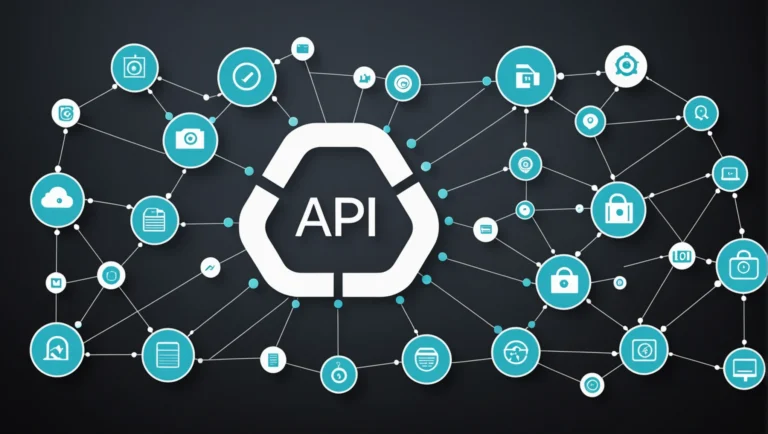
The importance of robust API security cannot be overstated. Assessing API security involves evaluating the validity and reliability factors to ensure the protection of sensitive data and the smooth functioning of interconnected systems. APIs (Application Programming Interfaces) facilitate the seamless communication between different software applications, making them a prime target for cyber threats. By examining the validity aspects, such as proper authentication mechanisms and data encryption, and the reliability factors like error handling and access controls, organizations can fortify their API infrastructure against potential vulnerabilities. This assessment is crucial for businesses across industries to maintain trust with their users, safeguard proprietary information, and comply with data protection regulations. Join us on a journey to explore the intricacies of assessing API security, understanding the key considerations, and implementing best practices to secure your digital assets effectively.
Validity and Reliability Explained
In the field of research and data analysis, ensuring validity and reliability is crucial to draw accurate and meaningful conclusions. Let’s delve into the concepts of validity and reliability to understand their significance and the challenges associated with maintaining them.
Understanding Validity Concepts
Validity refers to the extent to which a research method measures what it intends to measure. It is about the accuracy and truthfulness of the results obtained. There are different types of validity, including internal validity, external validity, construct validity, and statistical conclusion validity.
-
Internal Validity: This type of validity focuses on the causal relationship between variables within a study. It ensures that any observed effects are a result of the manipulation of the independent variable and not due to other factors.
-
External Validity: External validity deals with the generalizability of research findings to the larger population or other settings. It examines whether the results can be applied beyond the specific conditions of the study.
-
Construct Validity: Construct validity assesses whether a research method accurately measures the theoretical constructs or concepts it claims to measure. It confirms that the operationalization of variables aligns with the underlying theoretical framework.
-
Statistical Conclusion Validity: This type of validity focuses on the appropriateness of statistical analyses in drawing accurate conclusions from the data. It ensures that the statistical methods used are suitable for the research design and data collected.
Challenges in Maintaining Reliability
Reliability refers to the consistency and stability of research results over time and across different conditions. While reliability is essential for ensuring the replicability of research findings, several challenges can affect its maintenance.
-
Measurement Errors: Variability in measurements due to instrument inaccuracies, human errors, or environmental factors can introduce inconsistencies in data collection, impacting the reliability of the results.
-
Sampling Variability: Differences in samples or sample selection procedures can lead to fluctuations in research outcomes. Ensuring representative and unbiased samples is crucial for maintaining reliability.
-
Researcher Bias: Researcher bias, including personal beliefs, expectations, or unintended influence on participants, can affect the reliability of the study results. Implementing rigorous research protocols and minimizing bias is essential.
-
Changing Conditions: External factors such as environmental changes, participant characteristics, or evolving technologies can impact the stability of research findings. Adapting research methods to account for changing conditions is necessary to maintain reliability.
By understanding the concepts of validity and reliability and addressing the challenges associated with their maintenance, researchers can enhance the quality and credibility of their research outcomes.
Ensuring Validity in API Security
Ensuring validity in API security is paramount in safeguarding sensitive data and thwarting unauthorized access attempts. Validity encompasses the authenticity and adherence to established security protocols, forming the bedrock of a robust security framework. Robust authentication mechanisms such as. OAuth ,. API keys , and. JWT tokens Act as sentinels, verifying the legitimacy of users and systems accessing APIs, thereby preventing unauthorized entities from gaining entry.
Audits and Vulnerability Assessments
Regular audits and vulnerability assessments play a pivotal role in upholding the validity of API security. These processes serve to identify vulnerabilities and weaknesses, fortifying the security posture of APIs against evolving threats. Access controls And. rate limiting mechanisms Are indispensable components in this regard. Access controls delineate user privileges, restricting actions within the API environment, while rate limiting curbs potential abuses by regulating request volumes.
Encryption for Data Transmission
Encryption Stands as a cornerstone in ensuring the validity of API security during data transmission. By encrypting sensitive information, API providers can foil interception and tampering attempts, ensuring data confidentiality and integrity. Implementing. TLS/SSL protocols Establishes secure data channels, further enhancing the security of API interactions.
Multi-Factor Authentication and Usage Analytics
To bolster API security validity, organizations should contemplate integrating. multi-factor authentication To add an extra layer of user verification. Additionally, leveraging. API usage analytics Can offer valuable insights into usage patterns, aiding in the early detection of anomalous activities that may signal security breaches. Continuous monitoring and logging of API transactions enable real-time threat detection, facilitating swift responses to potential security incidents.
Best Practices and Training
Furthermore, adherence to industry-standard best practices like the. OWASP API Security Top 10 Is imperative. Regular training sessions for developers and API users on security protocols and best practices can heighten awareness and reduce vulnerabilities, thereby enhancing the overall security posture.
Maintaining validity in API security is instrumental in mitigating risks like data breaches and cyber threats. By incorporating robust authentication methods, conducting regular audits, enforcing stringent access controls, implementing encryption measures, deploying multi-factor authentication, leveraging usage analytics, and adhering to compliance standards, organizations can bolster their API security defenses, instilling confidence among users and stakeholders in the security of their API interactions.
Reliability Measures in API Security
In the realm of API security, reliability measures play a crucial role in ensuring the smooth functioning and trustworthiness of systems. These measures are essential for evaluating the performance and dependability of APIs, which are vital components of modern software applications. Key metrics that are commonly used to assess reliability in API security include response times, throughput, error rates, API uptime, availability, and the ability to handle failures gracefully.
- Response times refer to the duration it takes for an API to respond to a request, impacting user experience and overall system performance.
- Throughput measures the rate at which requests are processed by the API, indicating its capacity and efficiency.
- Error rates highlight the frequency of errors encountered during API interactions, reflecting the stability and quality of the API.
API Uptime and Availability
API uptime and availability are critical indicators of reliability, representing the percentage of time the API is operational and accessible to users. Ensuring high uptime and availability is essential for meeting service level agreements and maintaining user satisfaction. Additionally, the ability of an API to handle failures gracefully is important for minimizing disruptions and ensuring continuity of service.
Strategies for Enhancing Reliability
To enhance reliability in API security, organizations can implement various strategies. Monitoring and optimizing performance metrics allow for the identification of bottlenecks and inefficiencies, leading to improved reliability. Robust security measures, such as authentication, authorization, and encryption, are essential for safeguarding APIs against threats and ensuring data protection.
Regular audits and testing help identify vulnerabilities and weaknesses in the API security framework, enabling organizations to proactively address potential risks. Implementing redundancy and failover mechanisms contributes to fault tolerance and resilience, ensuring that services remain available even in the event of failures.
Moreover, maintaining clear communication channels with API users fosters transparency and trust, allowing organizations to provide timely updates and notifications regarding system status and issues. By prioritizing reliability measures and implementing effective strategies, organizations can strengthen the security and performance of their APIs, enhancing overall user experience and satisfaction.
Scalability and Documentation
In addition to the mentioned metrics and strategies, another crucial aspect of reliability in API security is. scalability . Scalability refers to an API’s ability to handle increased loads and growing user demands without compromising performance. As software applications evolve and user bases expand, APIs must be able to scale seamlessly to accommodate the increased traffic and maintain reliability.
Furthermore,. documentation Plays a significant role in enhancing reliability. Clear and comprehensive documentation enables developers to understand the API functionalities, endpoints, parameters, and authentication methods, facilitating seamless integration and reducing the likelihood of errors.
Conclusion
Reliability measures in API security are fundamental for ensuring the trust, performance, and availability of APIs. By focusing on key metrics, implementing robust security practices, conducting regular assessments, and fostering transparent communication, organizations can fortify their API security posture and deliver a seamless user experience.
Assessment Techniques
Assessment Techniques are crucial components in the field of cybersecurity, serving as the foundation for ensuring the integrity and resilience of software applications. In this comprehensive exploration of assessment techniques, we delve into the key methodologies employed by cybersecurity professionals to identify and address vulnerabilities and threats present in software systems, highlighting their critical role in protecting sensitive digital assets and user data.
Role of Penetration Testing
Penetration Testing, also commonly referred to as pen testing, plays a pivotal role in evaluating the effectiveness of a system’s security defenses. This technique entails simulated cyber attacks conducted by ethical hackers to exploit vulnerabilities and gauge the system’s capacity to withstand real-world threats. Through meticulous penetration testing procedures, organizations can uncover weaknesses, prioritize security enhancements, and bolster their defenses to effectively thwart malicious intrusions.
Utilizing Code Analysis Tools
The integration of Code Analysis Tools is essential in fortifying cybersecurity defenses, as these tools facilitate automated scanning of source code to identify security loopholes, coding errors, and potential vulnerabilities that could compromise the application’s security. By incorporating these tools into the software development lifecycle, developers can proactively detect and remediate security flaws, thereby enhancing the application’s resilience and reducing its susceptibility to cyber attacks.
Integration of Threat Modeling
Threat Modeling serves as a structured approach to recognizing, evaluating, and mitigating security risks within software applications. By integrating threat modeling practices early in the development process, organizations can systematically analyze potential threats, assess their implications, and implement preemptive security measures to mitigate risks effectively. This proactive stance not only strengthens the application’s security posture but also cultivates a culture of security consciousness and resilience among the development team.
Assessment Techniques such as Penetration Testing, Code Analysis Tools, and Threat Modeling are fundamental pillars of a robust cybersecurity strategy. By proactively embracing these methodologies and seamlessly incorporating them into the software development lifecycle, organizations can enhance their defense mechanisms, mitigate security risks, and safeguard their digital assets against the evolving landscape of cyber threats.
Case Studies and Lessons
Success Stories in API Security Assessments
In this section, we will delve into remarkable success stories that highlight the importance of robust API security practices. These success stories not only showcase the effectiveness of proactive security measures but also underscore the significant impact of prioritizing API security in today’s digital landscape. By analyzing these success stories, readers will gain profound insights into the diverse strategies and best practices employed by organizations to secure their APIs effectively. From innovative encryption methods to real-time threat monitoring solutions, these success stories exemplify the success that can be achieved through a vigilant and dynamic approach to API security.
Learning from Failed Security Assessments
While success stories inspire and inform, learning from failed security assessments is equally crucial in understanding the nuances of API security vulnerabilities. In this segment, we will dissect instances where security assessments fell short, leading to breaches, data leaks, or unauthorized access. By examining these failures, readers will uncover the common pitfalls and oversights that can compromise API security. Moreover, understanding the repercussions of these failures on organizations can provide valuable lessons on the importance of implementing stringent security protocols and staying abreast of emerging threats.
Extracting Key Insights from Case Studies
Beyond the narratives of success and failure lie invaluable insights that can shape the future of API security practices. By extrapolating key learnings from these case studies, we can discern trends, patterns, and emerging challenges in API security. Additionally, we can draw parallels between different scenarios to construct a comprehensive framework for enhancing API security resilience. Through a critical analysis of these case studies, readers will be equipped with the knowledge and foresight needed to navigate the complex terrain of API security effectively.
Empowering Organizations with Actionable Strategies
In the final segment, we will empower organizations with actionable strategies derived from the amalgamation of success stories, failures, and key insights from case studies. These strategies encompass a holistic approach to API security, encompassing risk assessment, threat mitigation, incident response planning, and continuous security audits. By adopting these strategies, organizations can fortify their API infrastructure and establish a proactive defense mechanism against evolving cyber threats.
Embracing a Culture of Security Excellence
The amalgamation of success stories, lessons from failures, key insights, and actionable strategies underscores the importance of fostering a culture of security excellence within organizations. API security is not merely a technical endeavor but a strategic imperative that demands continuous vigilance, innovation, and collaboration. By imbibing the lessons derived from these case studies, organizations can embark on a transformative journey towards bolstering their API security posture and safeguarding their digital assets with unwavering resilience.
The Future of API Security Evaluation
In the realm of cybersecurity, the landscape is constantly evolving, driven by advancements in technology and the sophistication of cyber threats. One of the latest breakthroughs in ensuring the security of APIs is the integration of machine learning algorithms into the evaluation process. This strategic move marks a significant leap forward in the field, offering a proactive and robust approach to identifying and mitigating potential security risks.
Machine learning, a subset of artificial intelligence, has revolutionized the way API security is assessed. By harnessing the power of machine learning algorithms, organizations can now harness the capability to sift through vast amounts of data, detecting patterns, anomalies, and potential threats with unprecedented accuracy and efficiency.
The utilization of machine learning in API security evaluation is not merely a trend but a necessity in today’s digital landscape. With the increasing complexity of cyber threats and the growing interconnectedness of systems, traditional security measures are no longer sufficient to safeguard APIs against sophisticated attacks. Machine learning brings a new level of intelligence to security evaluations, enabling real-time identification of suspicious activities, unusual traffic patterns, and emerging vulnerabilities.
Beyond the realm of detection, machine learning empowers organizations to take a proactive stance towards security. By leveraging historical API data and security incident information, machine learning models can predict threats, analyze behaviors, and automate responses, thereby fortifying the security posture of APIs.
The benefits of integrating machine learning into API security are manifold. In addition to enhanced accuracy in breach detection and proactive threat management, organizations can experience a reduction in false positive rates, leading to more efficient resource allocation and increased operational effectiveness. Moreover, the automated response capabilities of machine learning models enable swift and targeted actions in response to security incidents, minimizing the impact of potential breaches.
As the digital ecosystem continues to evolve, the role of machine learning in API security will become increasingly pivotal. By continuously learning from data and adapting to emerging threats, machine learning algorithms provide a dynamic defense mechanism that is essential in safeguarding sensitive data and ensuring the integrity of API interactions.
The future of API security evaluation lies in the seamless integration of machine learning algorithms. By embracing this cutting-edge technology, organizations can stay ahead of cyber threats, bolster their security defenses, and foster a culture of proactive risk management in an ever-changing digital landscape.
The provided topic: Assessing API Security: Validity and Reliability Factors
Evaluating the validity and reliability factors of API security is crucial in ensuring the protection of data and systems from potential vulnerabilities and cyber threats. By implementing robust assessment measures and continuously monitoring and updating security protocols, organizations can enhance their overall security posture and mitigate the risks associated with API usage. Prioritizing security assessments and staying informed about emerging threats are essential steps towards safeguarding sensitive information and maintaining the trust of users and stakeholders in an increasingly interconnected digital landscape.







